Heigham WTW (2021)
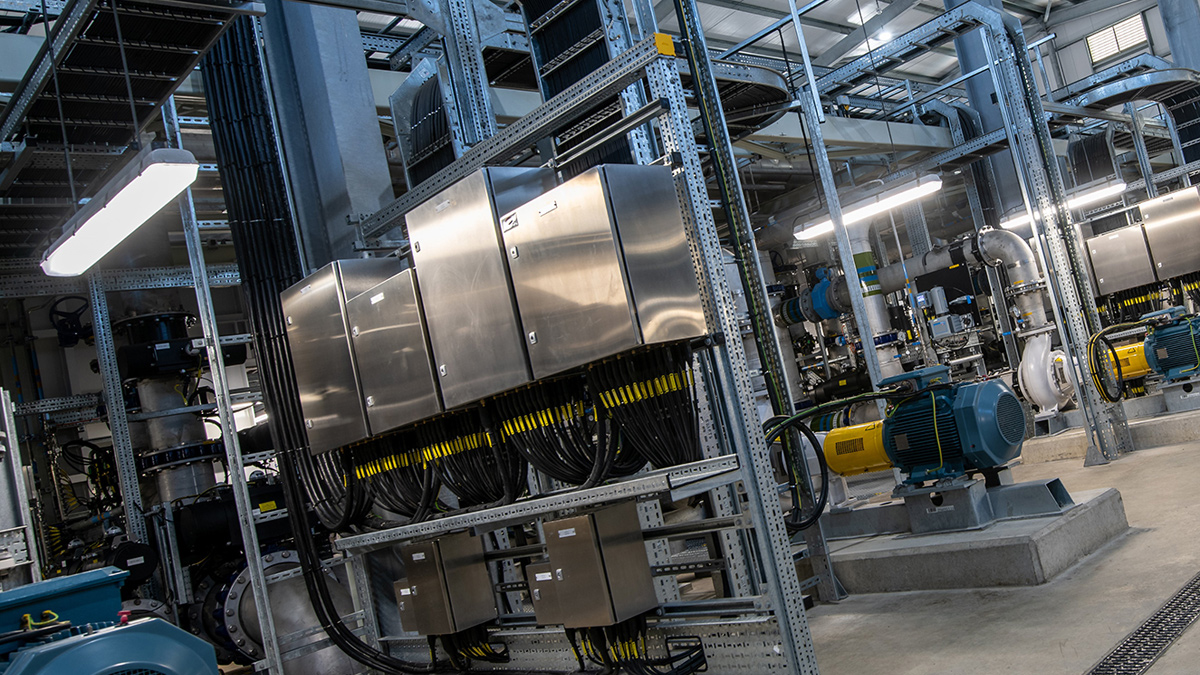
Heigham WTW membrane building - Courtesy of Matthew Power Photography/Anglian Water @one Alliance
Heigham Water Treatment Works (WTW) has supplied clean water to the City of Norwich for more than 100 years. The treatment works supplied an average 42 Ml/d of water into the Norwich Public Water Supply Zone serving a population in excess of 200,000. The £36m scheme was the largest capital investment project within Anglian Water’s portfolio in AMP6, helping to ensure resilience of supply for decades to come, while protecting the local environment around the River Wensum, a designated Site of Special Scientific Interest and Special Area of Conservation.
Background
Historically, the Costessey Pits provided natural water storage from the River Wensum prior to treatment at Heigham WTW; allowing for sediment, that occurs naturally, to settle before the water is pumped to the treatment works prior to entering supply.
With population growth in Norwich expected to reach one million by 2034, Costessey Pits would no longer be able to store enough water to support the needs of the region without having a detrimental effect on the environment and ensure compliance with the requirements of the ‘Habitats Directive Review of Consents’ and the Environment Agency’s ‘Restoring Sustainable Abstractions Programme’.
In order to protect minimum river flows downstream of the Costessey abstraction point and thus enhance the sensitive environment, it was necessary to move abstraction at times of low river flows closer to Heigham WTW, where water flows are higher. This posed a challenge as water from this part of the River Wensum contained higher levels of sediment that would require treatment without natural settling. The existing works would not have been able to treat this poorer quality raw water, so a solution was developed to install a new state-of-the-art filtration membrane.
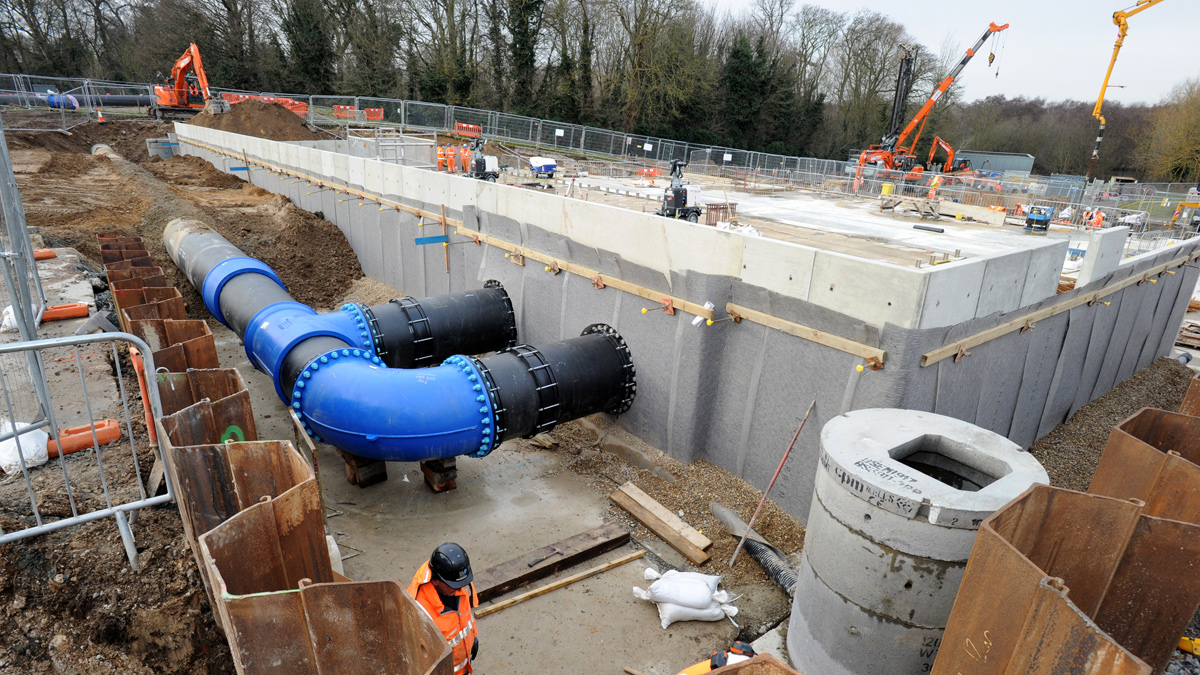
Construction of the membrane building – Anglian Water @one Alliance
Heigham WTW: Supply chain – key participants
This project was undertaken by the Anglian Water @one Alliance, a collaborative Alliance made up of seven partner companies; Anglian Water, Balfour Beatty, Barhale, MMB, MWH Treatment, Skanska and Sweco, to deliver over half of Anglian Water’s capital investment programme. Key suppliers working on behalf of Anglian Water @one Alliance:
- Principal contractor: Skanska
- CFD modelling: The Fluid Group
- Weholite® waste tanks & access: SDS Limited
- Pipework & instrumentation: Suez Water Technologies & Solutions
- Cable containment: Waveneys
- Base & anti-flotation: BFS
- Sheet piling: Ivor King The Piling People
- Precast concrete: Marshalls CPM
- PF Detect chemical dosing hose: FT Water Treatment
The solution
The state-of-the-art membrane filtration system is the largest submerged ultrafiltration plant in the UK, and largest surface area of reinforced submerged membranes in Europe. The membrane contains seven and a half million fibres with a combined surface area of 92,000m2 – the equivalent of nine football pitches, providing filtration on an impressive scale with the ability to filter out microbiological matter including the common cold. The new membrane filtration system increases supply to 57 million litres daily; treating 668 litres per second.
To test the solution, the team built a 3D model which led to a saving £1.5m by eliminating the need to build a new pumping station.
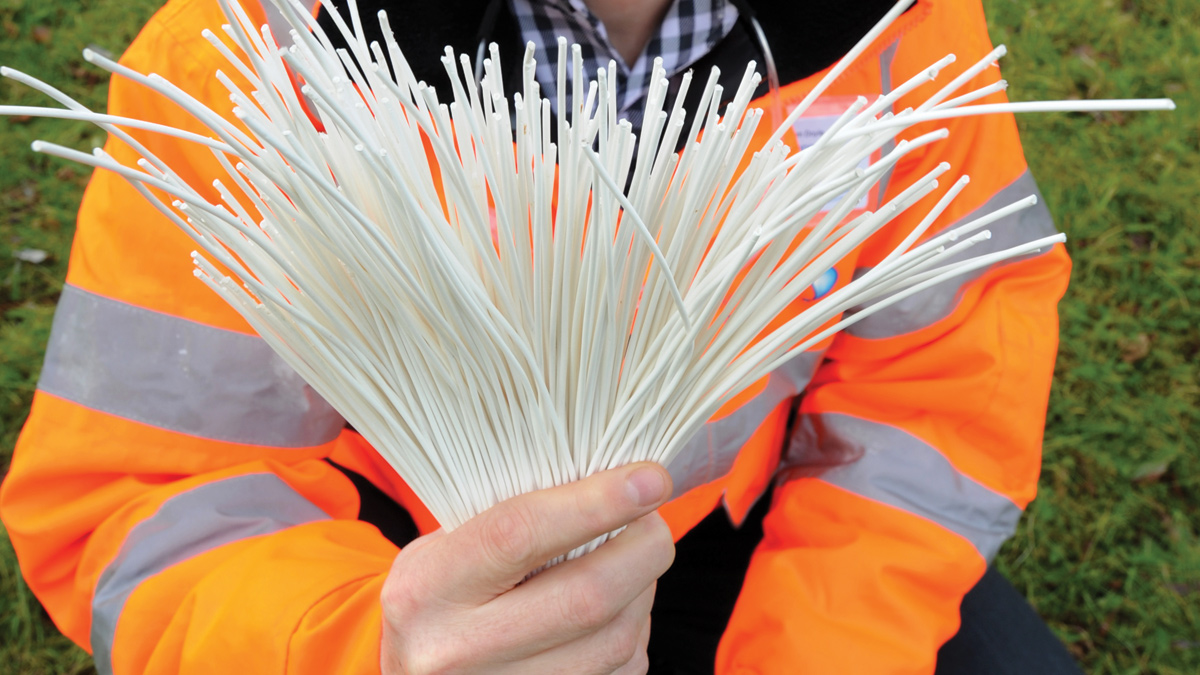
Fibres within the membrane cassette – Anglian Water @one Alliance
Within the river intake, raw water abstraction pumps were replaced and flood protection was added within the intake building. The existing MCC was replaced and a new water sampling system was added. The existing dissolved air flotation (DAF) units were converted to buffer tanks, with all redundant equipment removed, and the existing ferric dosing system and PLC controls were modified with cross-site pipework added.
A new building was assembled to accommodate the new membrane ultrafiltration system. It consisted of seven parallel trains, clean in place chemical dosing systems, lamella settlement for process waste and a new MCC. Seven membrane tanks were installed, including five cassettes in each tank, and 64 modules in each cassette. Each module contains 3,432 fibres, meaning over 7.5 million fibres were installed at a combined length of 16,000km – a distance equivalent to Norwich to the South Pole.

Anglian Water Operations team viewing the 3D model ahead of construction – Anglian Water @one Alliance
Virtual reality
Virtual reality (VR) was used for the first time by the @one Alliance to allow for total collaboration between design, supply chain partners and operations teams. Instead of relying on foresight, the team donned VR headsets to take multiple virtual walks around the fully designed works to actively seek out potential issues in the building process or operations and maintenance of the site. The team were able to investigate and explore the entire works before construction started in order to design out issues. This collaboration of design, construction and operations directly influenced the final design and made it safer and more user friendly, enabling the team to suggest where fixtures and fittings would work best.
A project rehearsal process, specific to particular areas of the solution, were carried out in conjunction with delivery partners to inform the construction programme throughout the scheme. The model was converted to 4D in Syncro, where the elements of the model were synchronised to the programme and providing viewable sequences.
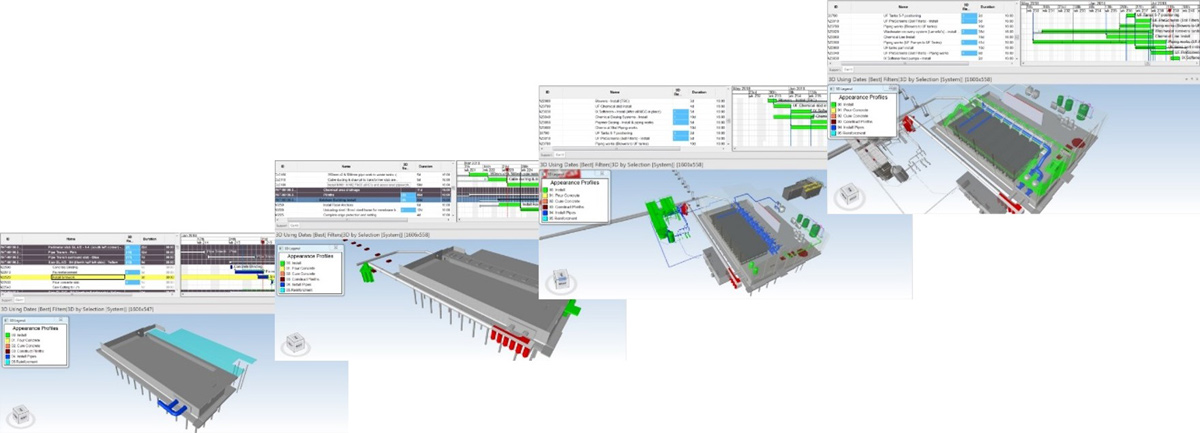
3D model converted to 4D in Syncro – Courtesy of Anglian Water @one Alliance
Carbon reductions
The project delivered a 62% reduction in operational carbon when compared to the original design by no longer requiring pumping water 7km from Costessey Pits. To maximise embedded carbon savings, the existing DAF and ASG tanks were re-used to provide the pre/post-buffering to the membrane process, posing a major challenge to ensure changeover from the existing to new functionality whilst maintaining supply from the works. The team also used solar panels and an energy efficient system, contributing to an overall 88% reduction in operational carbon.
Climate change
The solution to re-use the existing intake included protection of vulnerable assets within the existing intake building to 4.8mAOD, at an equivalent of a 1-in-100 year flood event, plus 0.4m allowance for climate change. The power for the existing river intake was designed to be fed from the new LV switchboard, making the existing HV transformer redundant within the flood risk area.
Official opening of Heigham WTW
On Friday 7 February 2020, Heigham WTW was officially opened by Chloe Smith MP and competition winners from Wensum Junior School. She had visited the site in May 2018 to learn more about the state-of-the-art filtration plant that would be serving her constituency and she was eager to return to open the treatment works in 2020. This project marks two years of close collaboration between @one Alliance, Anglian Water Operations, the supply chain and the local community.
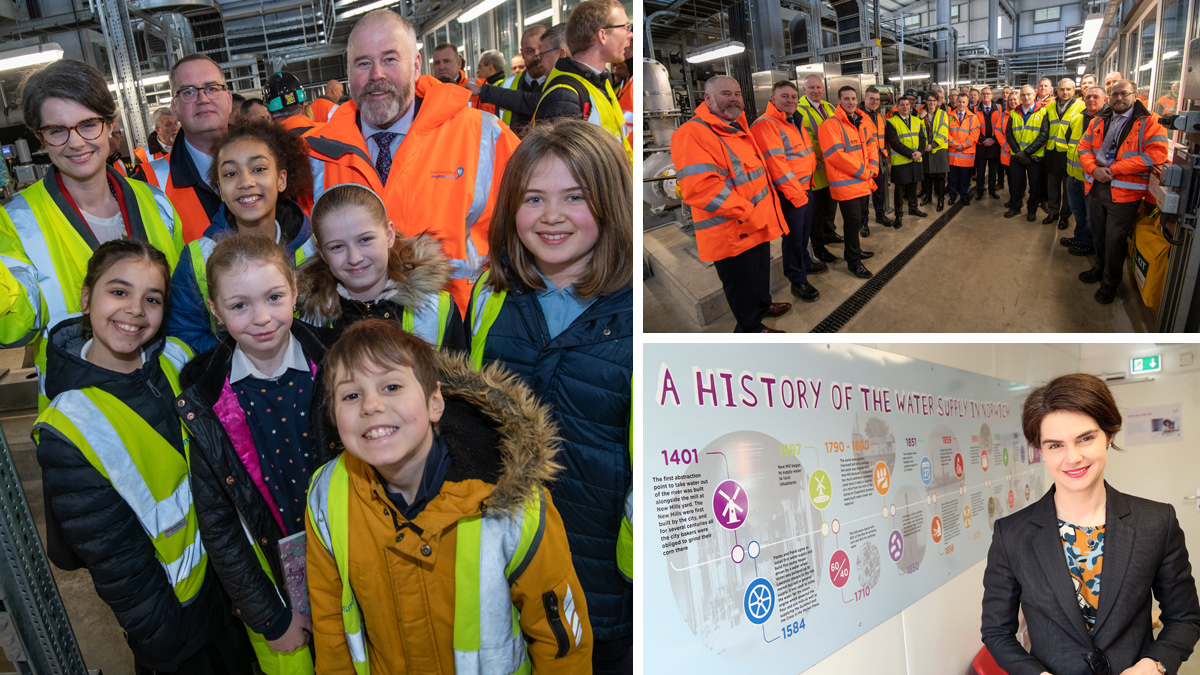
(left) Chloe Smith MP, competition winners from Wensum Junior School and Anglian Water’s Paul Naylor officially open Heigham WTW in February 2020, (top right) The project team and delegates from Anglian Water, Skanska, MWH Treatment and Suez at the Opening Ceremony in February 2020, and (bottom right) Chloe Smith MP visits Heigham WTW in May 2018 – Courtesy of Matthew Power Photography/Anglian Water @one Alliance
Conclusion
This solution is not only industry-leading, but it has also helped drive down carbon by maximising the existing structures and processes. By adopting cutting edge technology to replicate the site digitally, the project team were able to robustly test supply continuity before construction began, saving £1.5m and driving embodied carbon savings of 62%. The scheme took just over two years to complete, entering service at the end of 2019, ensuring the treatment of 57 million litres of water per day (668 litres per second) to supply nearly a quarter of a million residents and businesses in and around Norwich. Paul Naylor, Regional Supply Manager for Anglian Water said:
“We’re planning decades into the future with this investment. This technology is vital to keep pace with the growing city’s needs. Norfolk is expected to be home to more than one million people by 2034 and many of those people will be coming to live and work in Norwich. This combined with being in one of the driest counties in the UK means that significant investment is needed to ensure we keep taps running and continue to power the economy. As importantly, this scheme will make sure the environment does not suffer because of future growth and is ready to cope with any increased demand on local water resources too.”






